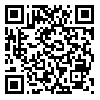BibTeX | RIS | EndNote | Medlars | ProCite | Reference Manager | RefWorks
Send citation to:
URL: http://jrh.gmu.ac.ir/article-1-1386-en.html


 , Ali Ramezankhani2
, Ali Ramezankhani2 

 , Mahmoud Tavousi3
, Mahmoud Tavousi3 

 , Aliasghar Haeri Mehrizi3
, Aliasghar Haeri Mehrizi3 

 , Shamsaddin Niknami4
, Shamsaddin Niknami4 


2- Department of Health Services, Shahid Beheshti University of Medical Sciences Tehran, Iran.
3- Health Metrics Research Center, Iranian Institute for Health Sciences Research, ACECR, Tehran, Iran.
4- Department of Health Education and Health Promotion, School of Medical Sciences, Tarbiat Modares University, Tehran, Iran.
Background: Despite the existence of numerous tools to measure health literacy, there is no general agreement on this issue. Researchers around the world have been involved in the development of an instrument to measure health literacy. The psychometric properties of the Health Literacy for Iranian Adults (HELIA) scale have been approved in the general population; however, the validity and reliability of this indigenous questionnaire has not been explored in students. Therefore, due to demographic differences, the present study investigated this questionnaire in a sample of students for structural validity and reliability.
Methods: This cross-sectional study was conducted on 340 dormitory students of Shahid Beheshti University of Medical Sciences in 2016, in Tehran City, Iran. A single-stage cluster sampling technique was used for sampling. Cronbach’s alpha coefficient was used to verify the reliability of the questionnaire and the confirmatory factor analysis was used to investigate the validity of the constructs by LISREL software.
Results: The mean±SD age of studied students was 22.93±4.05 years. The questionnaire had a desirable internal consistency (Cronbach’s alpha coefficient: 0.77-0.90) to assess health literacy in participating students. The confirmatory factor analysis result was satisfactory for its overall fitness. (RMSEA=0.095, CFI=0.94, NFI=0.92, NNFI=0.94, SRMR=0.075, X2/df=4.09).
Conclusion: The study findings revealed that HELIA is a reliable and valid instrument for measuring health literacy among students.
Received: 2019/05/13 | Accepted: 2019/11/2 | Published: 2020/01/1
| Rights and permissions | |
 |
This work is licensed under a Creative Commons Attribution-NonCommercial 4.0 International License. |






